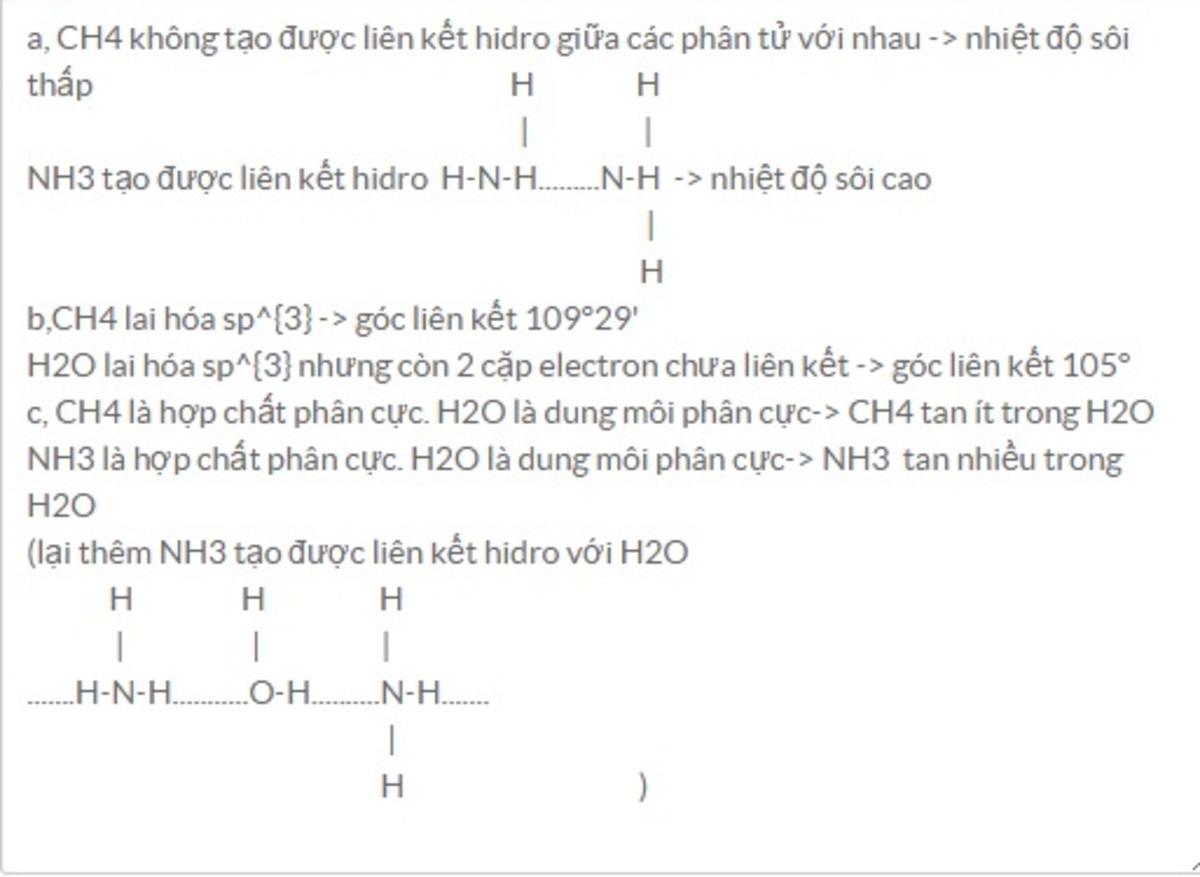Lewis dot diagram
The above are Lewis dot diagrams of molecules (
A
), (
B
) and (
C
). Which of following is correct about these? (The atomic weights are
)
a) The boiling point of ( A ) is lower than that of ( B ).
b) The bonding angle of ( A ) is larger than that of ( C ).
c) The solubility of ( A ) into liquid ( C ) is larger than that of ( B ).
This section requires Javascript.
You are seeing this because something didn't load right. We suggest you, (a) try
refreshing the page, (b) enabling javascript if it is disabled on your browser and,
finally, (c)
loading the
non-javascript version of this page
. We're sorry about the hassle.

simple! have you ever heard methane is soluble in water? Probably not. But Ammonia is. Moreover NH3 undergoes hydrogen bonding and thus increasing its solubility. And thus c) is ruled out! and thus 3 options becomes wrong too!